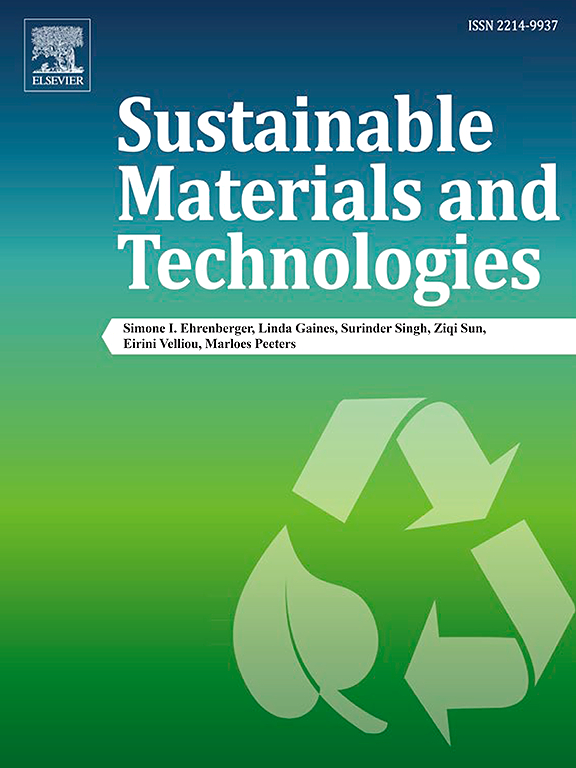Ag-modified, Fe, and cu-doped ZnO/g-C3N4 nanocomposite photocatalyst with enhanced activity toward degradation of pollutant and hydrogen evolution
IF 8.6
2区 工程技术
Q1 ENERGY & FUELS
引用次数: 0
Abstract
In this paper, Ag-loaded and Cu and Fe-doped ZnO/g-C3N4 nanocomposites were produced by a chemical precipitation method. The photocatalytic performance of these nanocomposites was assessed by degrading methylene blue (MB) and producing hydrogen via water splitting under visible light illumination. The incorporation of Cu, Fe, and Ag into the photocatalyst's structure was confirmed by multiple findings, which also provided insights into its features that are essential for enhancing photocatalytic performance. The successful integration of Ag and ZnO into the g-C3N4 was confirmed by transmission electron microscope (TEM) analysis. Optical and electrochemical characteristics results have illustrated that creating a heterostructure between ZnO and g-C3N4 with effects of Ag loading and Cu and Fe doping enhanced charge separation, higher photocurrent density, and reduced band gap to 2.73 eV for the Ag-loaded sample. The best photocatalytic activity was demonstrated by the Ag-loaded ZnO/g-C3N4 nanocomposite, with a complete MB photodegradation after 180 min. Mott-Schottky analysis combined with scavenging experiments reveals that superoxide radicals are pivotal in driving photocatalytic activity. These results therefore confirm that the addition of Ag changes the charge transfer path in the ZnO/g-C3N4 nanocomposite from a conventional type II mechanism to a configuration of Z-scheme. The hydrogen evolution of the Ag-loaded nanocomposite was 1566 μmol/g.h, higher than those of nanocomposites doped with Cu and Fe. Ag appears to be more significant than Fe and Cu in improving the nanocomposite's characteristics for photocatalytic functions in environmental remediation and renewable energy generation.
求助全文
约1分钟内获得全文
求助全文
来源期刊

Sustainable Materials and Technologies
Energy-Renewable Energy, Sustainability and the Environment
CiteScore
13.40
自引率
4.20%
发文量
158
审稿时长
45 days
期刊介绍:
Sustainable Materials and Technologies (SM&T), an international, cross-disciplinary, fully open access journal published by Elsevier, focuses on original full-length research articles and reviews. It covers applied or fundamental science of nano-, micro-, meso-, and macro-scale aspects of materials and technologies for sustainable development. SM&T gives special attention to contributions that bridge the knowledge gap between materials and system designs.
 求助内容:
求助内容: 应助结果提醒方式:
应助结果提醒方式:


